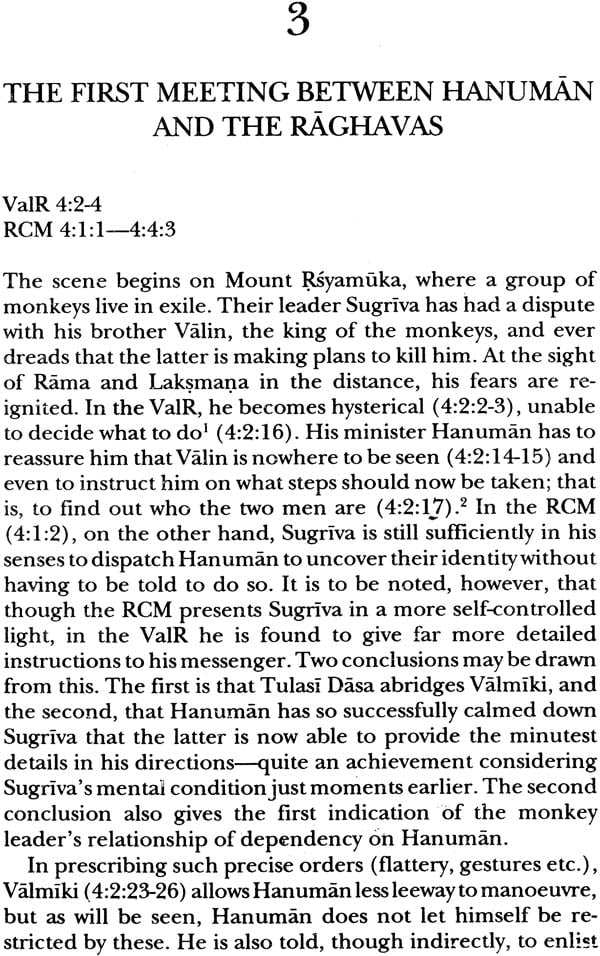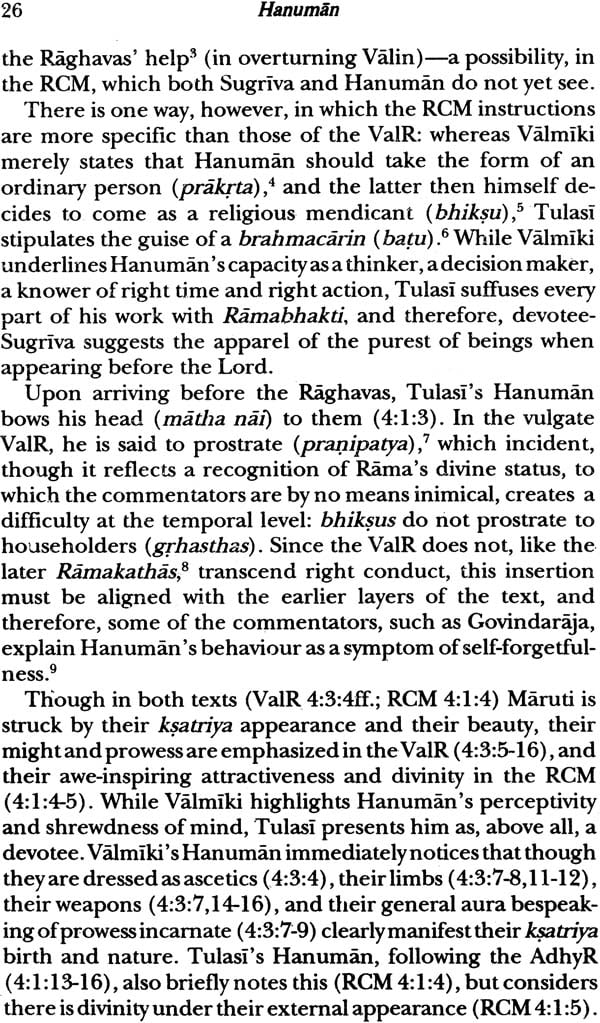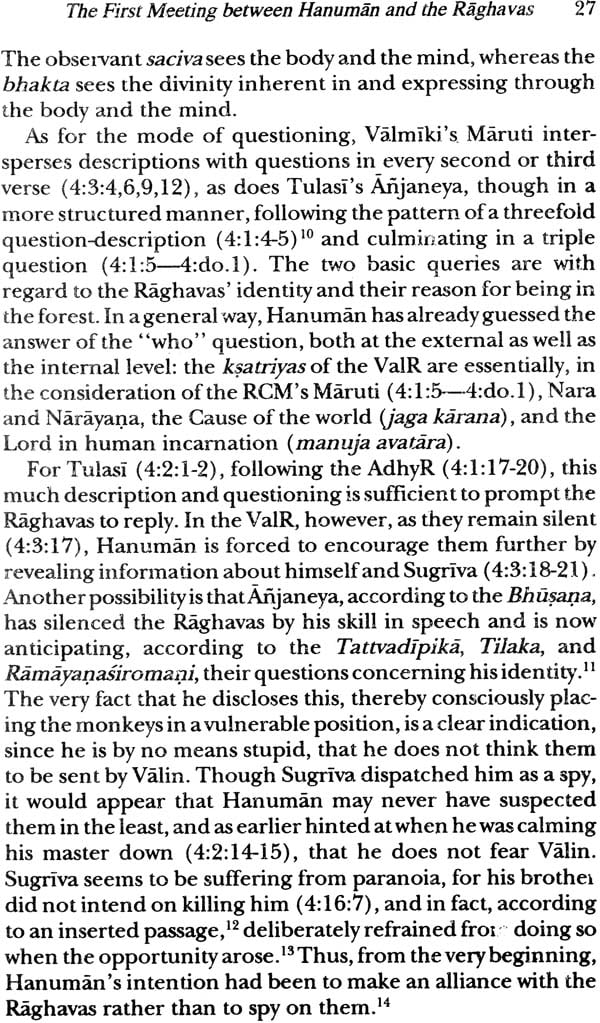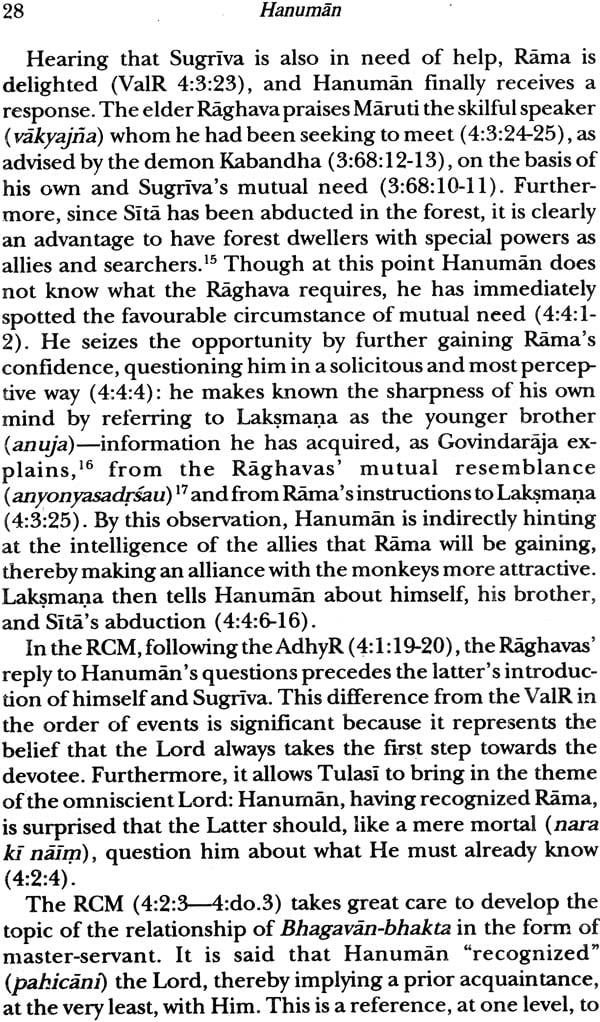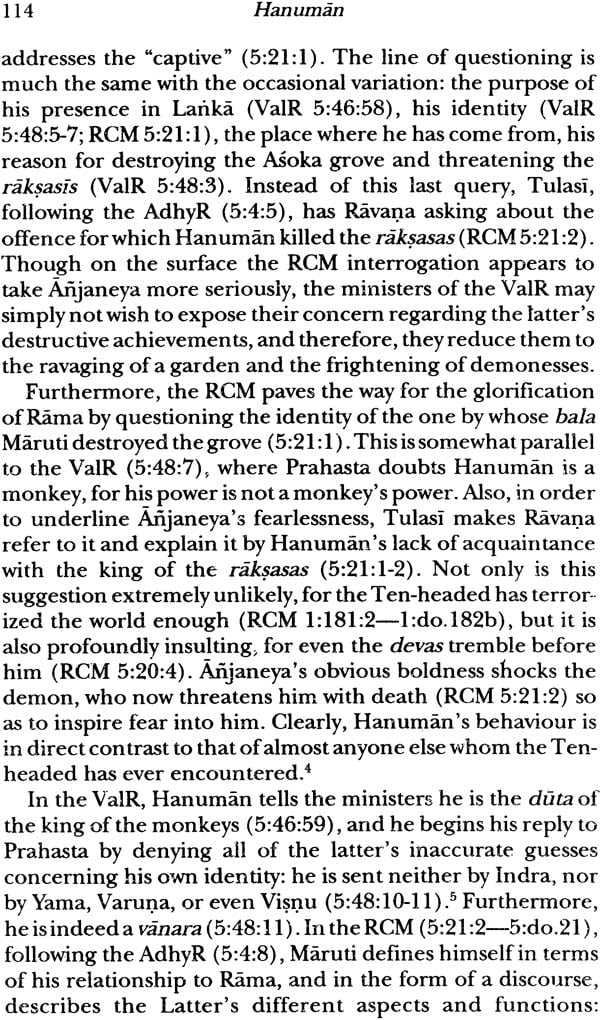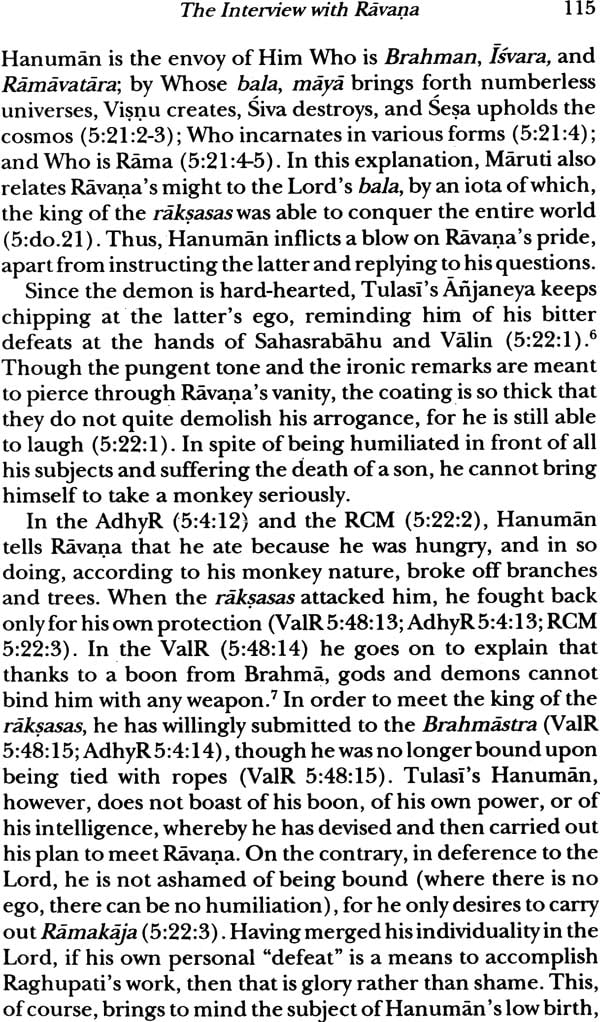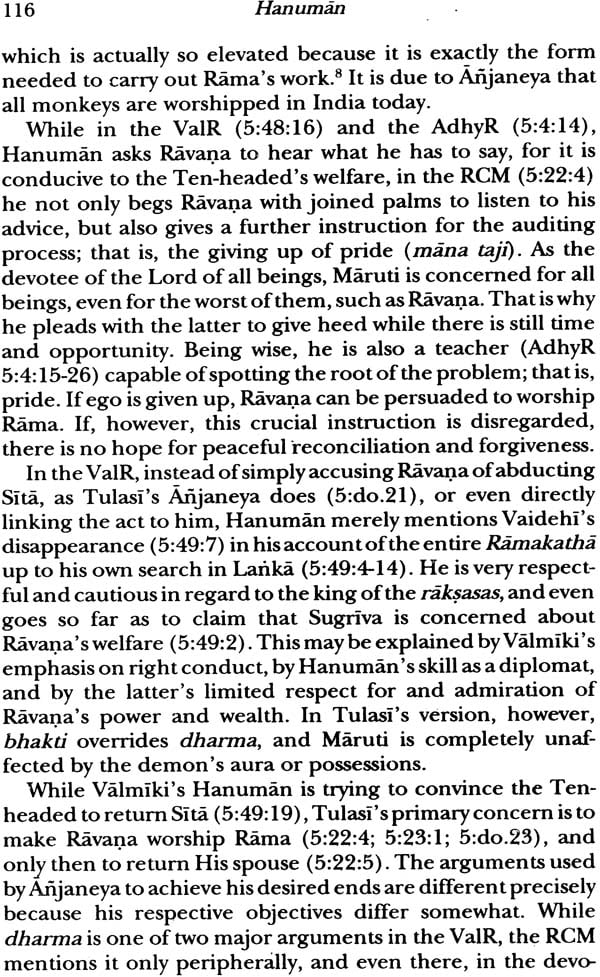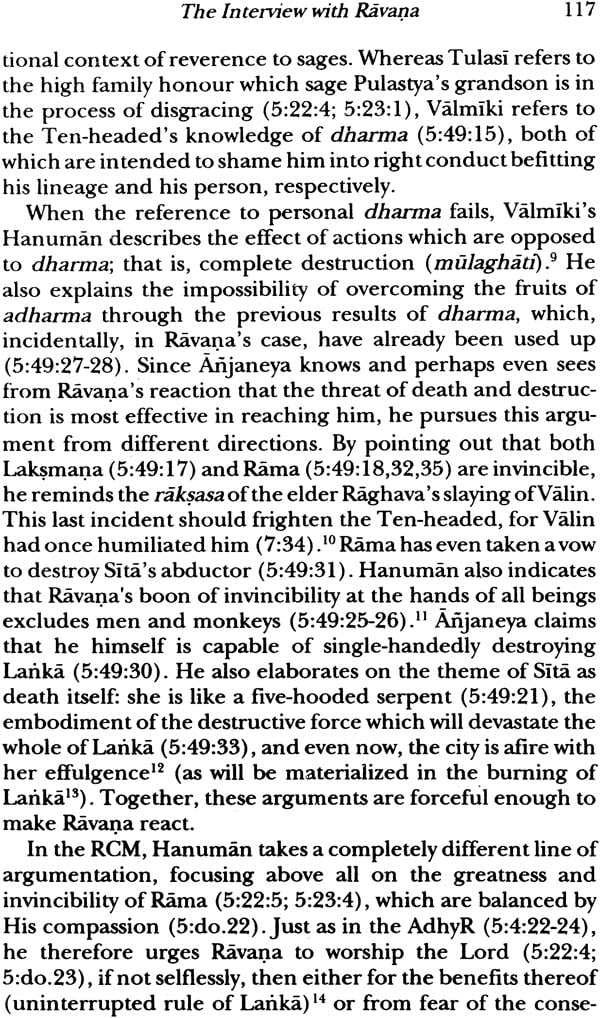
Hanuman (In the Ramayana of Valimiki and the Ramacharitamanasa of Tulasidasa)
Book Specification
| Item Code: | NAB333 |
| Author: | Catherine Ludvik |
| Publisher: | Motilal Banarsidass Publishers Pvt. Ltd. |
| Language: | English |
| Edition: | 1994 |
| ISBN: | 9788120812277 |
| Pages: | 169 |
| Cover: | Paperback |
Book Description
About the Book
The monkey-god Hanuman, one of contemporary Hinduism's most popular deities, has a long history in Indian art and literature. This study traces Hanuman's gradual evolution from his role as helper and messenger of Rama in the Valmiki Ramayana in the 3rd century B. C. E. to his more dominant function in Tulsidas Dasa's Ramacaritamanasa, written circa 1575 C. E.
The study begins with a concentrated overview of Hanuman's non-Aryan origins and later associations. It then illustrates and elucidates the growth of his character from Valmiki to Tulsi Dasa through several intermediary stages. The grater part of the book comprises a careful scene-by-scene comparative textual analysis of the Sanskrit and the Avadhi versions of the Rama legend which has been so immensely influential in Hindu culture. In the course of time, Hanuman changes from a perfect messenger to the ideal devotee who becomes an embodiment of his master in his complete surrender to Raghupati.
Preface
The opportunity to spend so much of my time in the last years with Hanuman has been a wonderful experience, a precious gift, and a blessing. My work has been a labour of love, even in the most tedious and minutely technical of moments. Though I was originally drawn to the Hanuman of Tulasi Dasa's Ramacaritamanasa, a love of the Sanskrit language and an interest in the Valmiki Ramayana led me to a comparative study of the two texts. I began to discover Anjaneya's fascinating multi-faceted character, who, despite his popularity, is the subject of less than a handful of studies. Clearly, my intention was not to remedy completely this neglect, for it would take more than a lifetime to cover adequately such an enormous and seemingly boundless subject, but simply to offer whatever I could within a limited scope. I this, I was aided by Professor Stella Sandahl, my academic supervisor at the University of Toronto, where my work was originally submitted. She always to read the Ramacaritamanasa in the original Avadhi, and her linguistic ability in both Sanskrit and Hindi was a great asset to me. I was also helped by Swami Tejomayananda, whose lectures on the Ramacaritamanasa and whose chanting of the text I was fortunate enough to attend, and who himself was always ready to answer my questions. His perceptive comments, and perhaps more importantly, his expression and communication of the spiritual of Tulasi's work deeply moved me. Furthermore, I owe a very profound debt of gratitude to Swami Chinmayananda, who is responsible for awakening in me the love of things spiritual and things India, and whose inspiration and teaching are every with me. Last but certainly not least, I have been blessed with a wonderful mother and friend, who has been an endless source of support, a dedicated typist, and a meticulous reader of every word I wrote.
About the Author
Catherine Ludvik is a promising young scholar who studied Sanskrit and Hindi at the University of Toronto (B. A.), where she also completed an M. A. in Religious Studies (Hinduism). Her interest in Hinduism dates from 1981 when she became interested in Vedanta. She brings to the study of the ingenious monkey-god Hanuman a deep empathy and understanding combined with penetrating scholarship. She is presently working on the Mahanataka.
| Preface | ix | |
| Abbreviations | xi | |
| Note on Editions and Transliteration | xiii | |
| 1 | Introduction | 1 |
| The Monkeys | 2 | |
| Hanuman's Origins and Associations | 3 | |
| The Development of Hanuman's Character from the ValR to the RCM | 6 | |
| 2 | Comparative Analysis | 23 |
| 3 | The First Meeting between Hanuman and the Raghavas | 25 |
| 4 | The Consolation of Tara | 33 |
| 5 | Hanuman's Reminder to Sugriva | 37 |
| 6 | Laksmana's Arrival in Kishindha | 43 |
| 7 | The Singling Out of Hanuman | 47 |
| 8 | Hanuman's Persuasion of Angada | 53 |
| 9 | The Coaxing of Hanuman | 59 |
| 10 | The Leap across the Ocean | 67 |
| The Life-off | 67 | |
| The Obstacles | 71 | |
| Mainaka | 71 | |
| Surasa | 72 | |
| Simhika | 75 | |
| 11 | The Search for Sita | 79 |
| The Entry into Lanka | 79 | |
| The Search through Lanka | 82 | |
| The Recognition of Sita | 86 | |
| The Interview with Sita | 91 | |
| Observation and Deliberation | 91 | |
| The Winning of Sita's Confidence | 94 | |
| The Comforting of Sita | 99 | |
| 13 | The Destruction of the Asoka Grove | 107 |
| 14 | The Interview with Ravana | 113 |
| 15 | The Burning of Lanka | 121 |
| 16 | Hanuman's Report to Rama | 125 |
| 17 | The Bringing of the Medicinal Herbs | 131 |
| 18 | Final Reflections | 135 |
| Bibliography | 141 | |
| Index | 151 |
